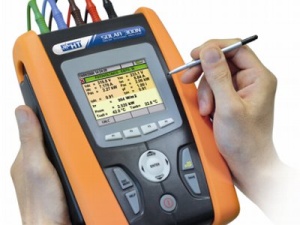 A cold, damp and draughty structure is often caused by poor insulation. Given the ever-rising cost of heating fuels it is essential to keep your properties fully insulated. James Penlington-Kershaw of Acute Sales Limited, the sole UK distributor for HT Instruments, explains what can be done to alleviate these problems…
A cold, damp and draughty structure is often caused by poor insulation. Given the ever-rising cost of heating fuels it is essential to keep your properties fully insulated. James Penlington-Kershaw of Acute Sales Limited, the sole UK distributor for HT Instruments, explains what can be done to alleviate these problems…
Thermal cameras are incredibly handy little instruments that have all kinds of surveying applications. They produce a thermal image by measuring the heat in the infra-red light emitted from all objects. With powerful, inbuilt analysis, these thermal cameras will allow you to detect problems that are often not visible to the naked eye, allowing you to correct otherwise hidden issues.
A building survey is usually carried out on a winter’s night and can reveal issues such as:
– Heat escaping from the property due to air leakage from doors with badly fitted draught excluders and windows that were not sealed properly during installation.
– Poorly insulated roofs and walls caused by missing insulation or insulation that has settled over time. In situations like this a different thermal pattern is often visible compared to the rest of the wall. These areas can often be a source of conductive heat loss or gain, and if severe enough can lead to significantly higher energy usage.
– Solar panels that are not working to the efficiency and output they are rated to or panels that are generating less electricity than when first installed.
– Potential leaking on flat roofs; moisture in roofing materials often leads to direct water leaks into the structure but it can also reduce the insulating properties of the roof itself. This is due to the difference in thermal capacitance between wet and dry building materials, moisture problems in flat or low-sloping roofs can often be easily detected with the use of a thermal imager.
– Unwanted moisture trapped in walls and floors from plumbing leaks, leaks originating from outside and condensation. Damp areas change temperature more gradually than dry areas, and are subject to evaporative cooling which makes them visible to a thermal camera.
The above survey can be carried out without gaining access to the property. In cases where you are gaining access to a property, an infra-red camera can come to your aid to:
– Check the radiators to ensure no air or sludge build-up has occurred, and to check for any draughts around doors and windows.
– Detect any damp patches on the walls before they damage the fabric of the building.
– Detect problems with underfloor heating installations; both electrical and water in-floor heating systems are subject to installation issues and failures over time. Thermal imaging can be used to locate floor heating pipes or cables, to identify leaks or short-circuits (depending on the type of system), to troubleshoot uneven heating issues, and to verify installations and repairs.
HT Instruments is a leading European brand in thermal imaging cameras, offering products ranging from the THT40 which captures a basic thermal image, all the way up to the impressive THT70 which not only captures a thermal image but also takes a digital image too; with picture in picture technology (PiP) it combines the thermal and digital pictures into one.
Brand new for 2015 is the THT45, a professional ultralight compact camera 80×80 pxl, equipped with a visual camera for PiP technology, a laser pointer, and an LED illuminator. It is an ideal camera for identifying electrical problems within air conditioning units.
All of the instruments come with HT Topview software for creating reports.

